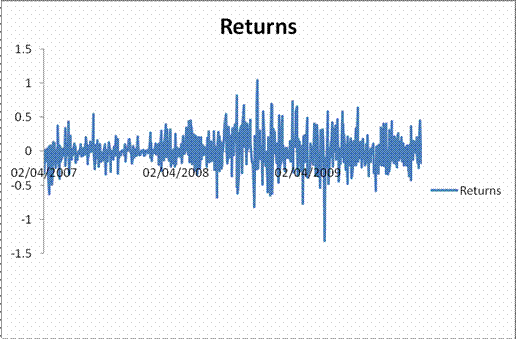Introduction To Currency Futures
Post on: 6 Июнь, 2015 No Comment

Download Introduction Powerpoint Presentation
Introduction Outline
6.1 Swaps Chapter 6
6.2 Swaps • Contracts that can be constructed with multiple forward contracts • An agreement to exchange cash flows at specified future times according to certain specified rules • Types of swaps – Interest Rate Swaps– Currency Swaps– Commodity Swaps– Equity Swaps
6.3 Plain Vanilla Interest Rate Swap Firm A pays 5% fixed and receives LIBOR Pay 5% Firm A Swap Dealer Receive 6 mo. LIBOR If the swap is being used by Firm A as a hedge, what is the firm’s underlying interest rate exposure?
6.4 Plain Vanilla Interest Rate Swap Millions of Dollars ($100 million notional principal) Date LIBOR Floating Fixed Cash Net Cash Cash Flow Flow Flow 1/1/97 4.20 7/1/97 4.80 2.10 -2.50 -0.40 1/1/98 5.30 2.4 -2.50 -0.10 7/1/98 5.40 2.65 -2.50 +0.15 1/1/99 5.50 2.70 -2.50 +0.20 7/1 /99 5.6 2.75 -2.50 +0.25 1/1/00 5.9 2.80 -2.50 +0.3
6.5 Typical Uses of an Interest Rate Swap • Converting a • Converting an liability from investment from – fixed rate to – fixed rate to floating floating rate rate – floating rate to – floating rate to fixed fixed rate rate
6.6 Valuation of an Interest Rate Swap • Interest rate swaps can be valued as the difference between the value of a fixed-rate bond and the value of a floating-rate bond • Alternatively, they can be valued as a portfolio of forward rate agreements (FRAs)
6.7 Valuation in Terms of Bonds • The fixed rate bond is valued in the usual way • The floating rate bond is valued by noting that it is worth par immediately after the next payment date
6.8 Valuation in Terms of FRAs • Each exchange of payments in an interest rate swap is an FRA • The FRAs can be valued on the assumption that today’s forward rates are realized
6.9 Valuation of an Interest Rate Swap: an Example • Suppose that, under the terms of a swap, a financial institution has agreed to pay six-month LIBOR and receive 8% per annum (with semiannual compounding) on a notional principal of $100 million. The swap has a remaining life of 1.25 years. The LIBOR rates with continuous compounding for 3-month, 9-month and 15-month maturities are 10%, 10.5%, and 11%, respectively. The 6-month LIBOR at the last payment date was 10.2% (with semiannual compounding).
6.10 Currency Swap • Example. A bilateral agreement to Receive 8% on a US$ principal of 15,000,000- and Pay 11% on a sterling principal of $10,000,000 cash flows are exchanged every year for 5 years • Principal is exchanged at the beginning and end of the contract
6.11 Fixed-for-fixed Currency Swap Dol ars Pounds $ £ Years mil ions 0 –15.00 +10.00 1 +1.20 –1.10 2 +1.20 –1.10 3 +1.20 –1.10 4 +1.20 –1.10 5 +16.20 -11.10
6.12 Typical Uses of a Currency Swap • Conversion from a • Conversion from liability in one an investment in currency to a one currency to an liability in another investment in currency another currency
6.13 Valuation of Currency Swaps Like interest rate swaps, currency swaps can be valued either as the difference between 2 bonds or as a portfolio of forward contracts
6.14 Valuation of a Currency Swap: an Example • Suppose that the term structure of interest rates is flat in both Japan and the US. The Japanese interest rate is 4% per annum and the US rate is 9% per annum (both with continuous compounding). A financial institution has entered into a currency swap in which it receives 5% per annum in yen and pays 8% per annum in dollars once a year. The principals in the two currencies are $10 million and 1,200 million yen. The swap will last for another three years, and the current exchange rate is 110 yen =$1.
6.15 Commodity Swaps: Oil Swap • In 1986, the first oil swap was intermediated by Chase Manhattan Bank • The parties agree on a notional amount that is expressed in barrels of oil (rather than in dollars) • Similar to a fixed-for-floating interest rate swap, payments are made on the basis of fixed and floating oil prices. – Example: One party receives a cash flow based on an oil price that is fixed at the origination of the contract and pays a cash flow based on the average spot price over a period. • Oil prices increase, this party makes a net payment• Oil prices decrease, this party receives a net payment• No physical quantities of oil are exchanged.
6.16 Swaps & Forwards • A swap can be regarded as a convenient way of packaging forward contracts • The “plain vanilla” interest rate swap in our example consisted of 6 FRAs • The “fixed for fixed” currency swap in our example consisted of a cash transaction & 5 forward contracts • The value of the swap is the sum of the values of the forward contracts underlying the swap • Swaps are normally “at the money” initially – This means that it costs nothing to enter into a swap– It does not mean that each forward contract underlying a swap is “at the money” initially
6.17 Credit Risk • A swap is worth zero to a company initially• At a future time its value is liable to be either positive or negative • The company has credit risk exposure only when its value is positive














